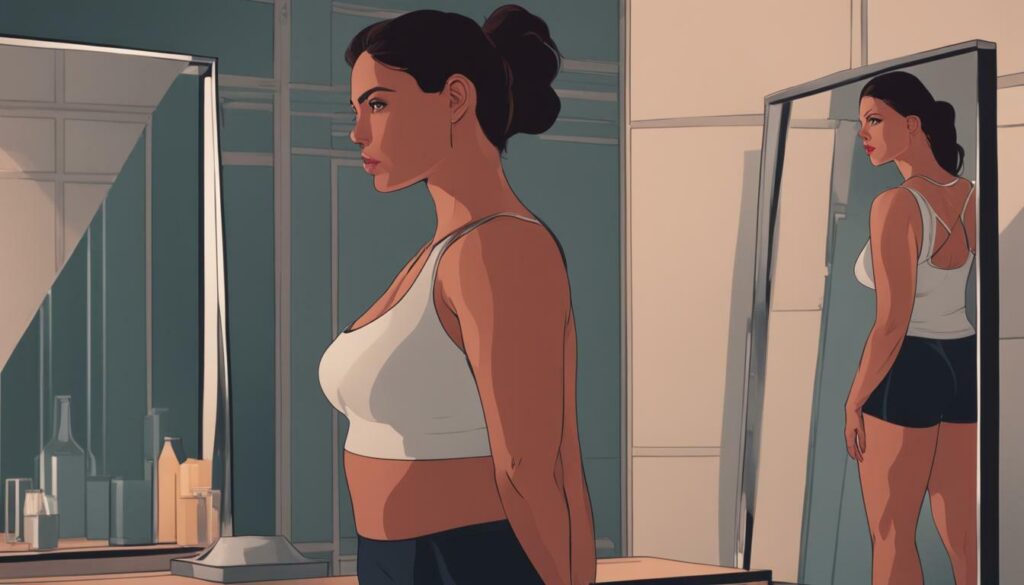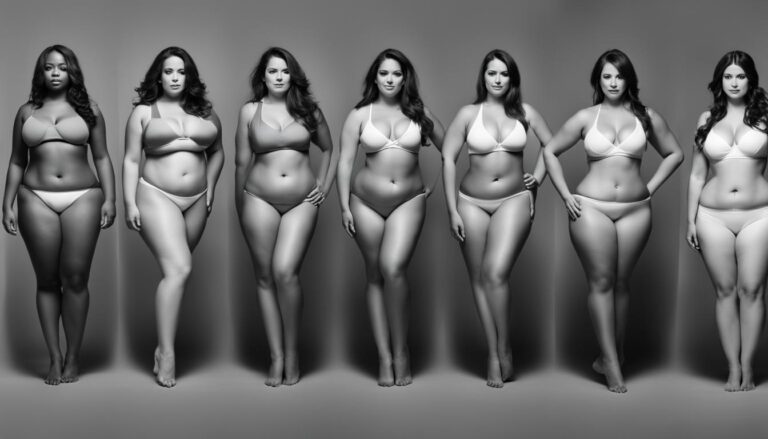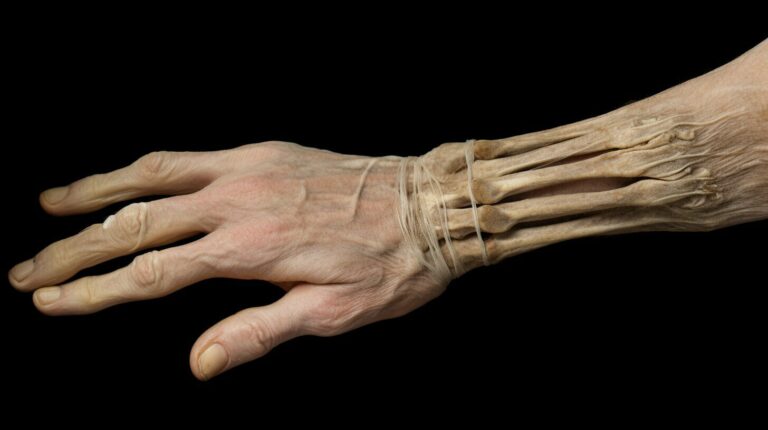Why am I so curvier in my 20s?
As we transition from our teenage years to our 20s, many of us may begin to wonder why we are experiencing a curvier body shape. During this phase of our lives, there are several reasons why we may notice an increase in our curves.
One significant factor is the natural weight gain that often occurs during our 20s. Our bodies tend to accumulate more body fat compared to our teenage years, resulting in a curvier figure. However, it’s essential to note that a normal weight falls within the healthy BMI range of 18.5 to 24.9.
In addition to weight gain, metabolic and hormonal changes also play a role in our curvier shape. These changes can lead to an increase in body fat distribution, particularly in the hips and breasts, resulting in a more curvaceous appearance.
Furthermore, muscle mass also contributes to our body shape in our 20s. Women typically reach their peak muscle mass in their late 20s, and this muscle mass helps maintain a youthful look and prevents muscle loss. Incorporating strength training exercises into our fitness routine can help preserve lean muscle and enhance our overall shape.
Lastly, it’s worth mentioning that early exposure to the sun’s rays can have cumulative effects later in life, including wrinkles and sunspots. Taking care of our skin, such as using sunscreen and moisturizing, can help maintain a youthful appearance and minimize the visible signs of aging.
Key Takeaways:
- The weight gain often experienced in our 20s contributes to a curvier body shape, but it’s still within the normal BMI range.
- Metabolic and hormonal changes affect fat distribution, leading to a more curvaceous appearance.
- Building and maintaining muscle through strength training can help preserve a youthful look.
- Protecting our skin from sun damage can minimize wrinkles and sunspots.
Changes in Body Shape and Weight Gain in Your 20s
During your 20s, your body undergoes several natural changes that contribute to a curvier figure. One reason for this change is the increase in weight that typically occurs during this time. While weight gain can be concerning, it is important to note that a normal weight is still within the BMI range of 18.5 to 24.9.
Metabolic and hormonal changes also play a role in the development of a curvier shape. As metabolism slows down with age, your body becomes more efficient at storing fat. This can lead to an increase in body fat and a redistribution of weight, resulting in a curvier appearance. Hormonal fluctuations, such as those that occur during the menstrual cycle, can also contribute to these changes.
Additionally, women tend to reach their peak muscle mass in their late 20s. Building and maintaining lean muscle through strength training can help prevent muscle loss and keep you looking younger. Muscle takes up less space than fat, so increasing muscle mass can help create definition and enhance your natural curves.
It’s important to note that genetics also play a significant role in body shape and weight gain. Some individuals naturally have a curvier figure, while others may have a more slender build. Embracing and loving your body, regardless of its shape, is key to developing body confidence and maintaining a positive body image.
| Factors Contributing to Curvier Figure in Your 20s | Actions for Maintaining a Healthy Body |
|---|---|
| Increase in weight due to natural changes | Focus on maintaining a healthy BMI through regular exercise and a balanced diet |
| Metabolic and hormonal changes | Stay active, engage in strength training to build lean muscle, and consult with a healthcare professional if experiencing hormonal imbalances |
| Peak muscle mass in late 20s | Incorporate strength training exercises into your fitness routine to maintain muscle mass |
| Genetic factors | Embrace and love your body, regardless of its shape |
Metabolism, Hormonal Fluctuations, and Muscle Mass in Your 20s
Metabolic and hormonal changes, as well as the development of muscle mass, all play a significant role in shaping our bodies during our 20s. These factors contribute to the different body shape and weight distribution compared to our teenage years.
During this period, our metabolism may start to slow down slightly, which can lead to weight gain if we continue consuming the same amount of calories. Additionally, hormonal fluctuations, such as an increase in estrogen levels, can cause our bodies to store more fat, particularly around the hips and thighs.
On the other hand, our 20s are also characterized by the peak muscle mass that women typically reach. Building and maintaining lean muscle through strength training not only helps to prevent muscle loss as we age but also contributes to a more toned and shapely physique. Incorporating resistance exercises into your fitness routine, such as squats, lunges, and push-ups, can help sculpt your body and boost your overall confidence.
To further enhance your body confidence in your 20s, it’s essential to take care of your skin. Sun exposure early in life can have cumulative effects, leading to wrinkles and sunspots later on. Protecting your skin by wearing sunscreen, avoiding excessive sun exposure, and keeping it moisturized can help maintain a youthful appearance and support overall body confidence.

Conclusion
Embracing the natural changes that occur in our bodies during our 20s is essential for promoting a positive body image and overall well-being. During this transformative decade, it’s common to notice a curvier figure compared to our teenage years. One contributing factor is the increase in weight that often occurs annually, primarily due to a rise in body fat. However, it’s important to note that a normal weight falls within the BMI range of 18.5 to 24.9.
Metabolic and hormonal changes also play a role in the development of a more curvaceous shape. Fluctuations in metabolism, along with weight gain, can lead to an increase in body fat. These changes are natural and should be embraced as a part of our body’s journey. Additionally, women typically reach their peak muscle mass in their late 20s. Incorporating strength training into our fitness routine can help preserve lean muscle mass and contribute to a more youthful appearance.
Furthermore, it’s crucial to protect our skin from the sun’s harmful rays. Sun exposure early in life can have cumulative effects later on, resulting in wrinkles and sunspots. By practicing good skincare habits, such as using sunscreen and moisturizing daily, we can help maintain a youthful appearance and keep our skin looking its best. Taking care of our bodies inside and out enhances our self-confidence and promotes a positive body image in our 20s and beyond.
FAQ
Why do I notice a curvier figure in my 20s?
During your 20s, there are several reasons why you may notice a curvier figure. One reason is that your weight tends to increase annually, mostly due to an increase in body fat compared to your teen years. However, a normal weight is still within the BMI range of 18.5 to 24.9. Additionally, metabolic and hormonal changes can lead to increased body fat and a more curvaceous shape. This can be attributed to changes in metabolism, weight gain, and hormonal fluctuations.
What role does muscle mass play in body shape during your 20s?
Another factor is the peak muscle mass that women typically reach in their late 20s. Building and maintaining lean muscle through strength training can help prevent muscle loss and keep you looking younger.
How does sun exposure affect your appearance in your 20s?
Skin exposure to the sun’s rays early in life can have cumulative effects later on, leading to wrinkles and sunspots. Taking care of your skin, such as using sunscreen and moisturizing, can help maintain a youthful appearance.






